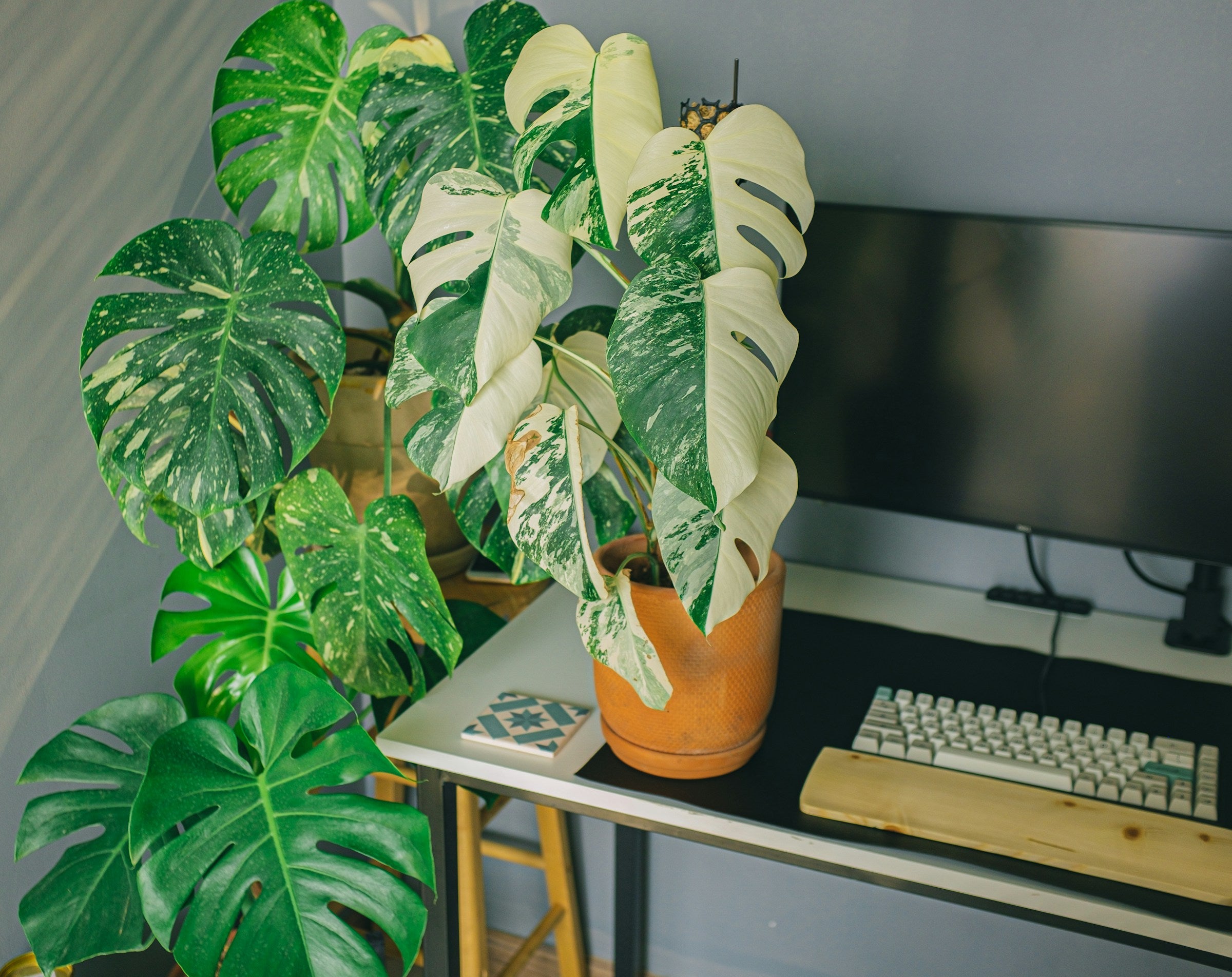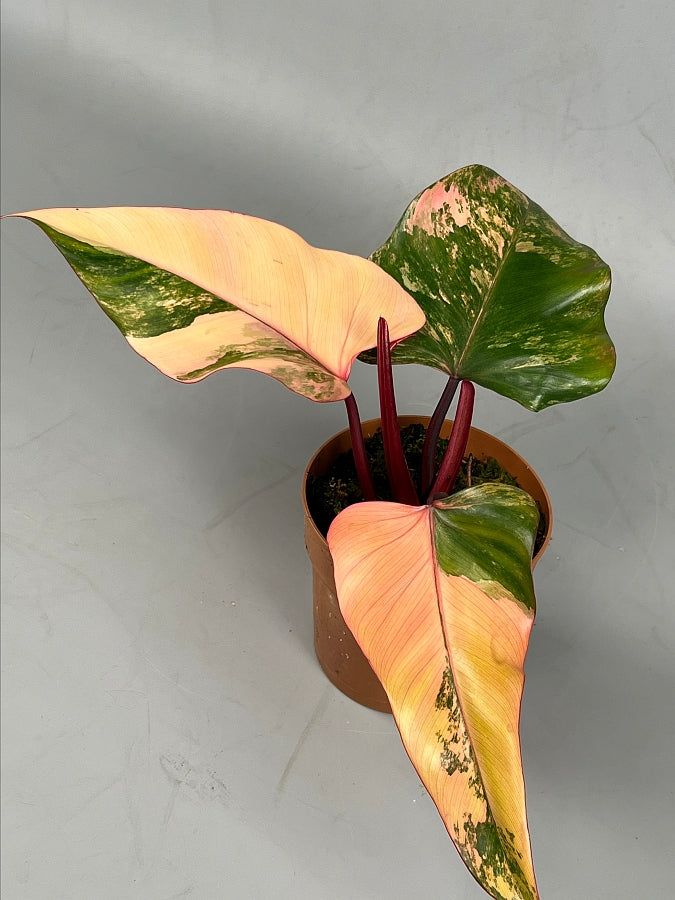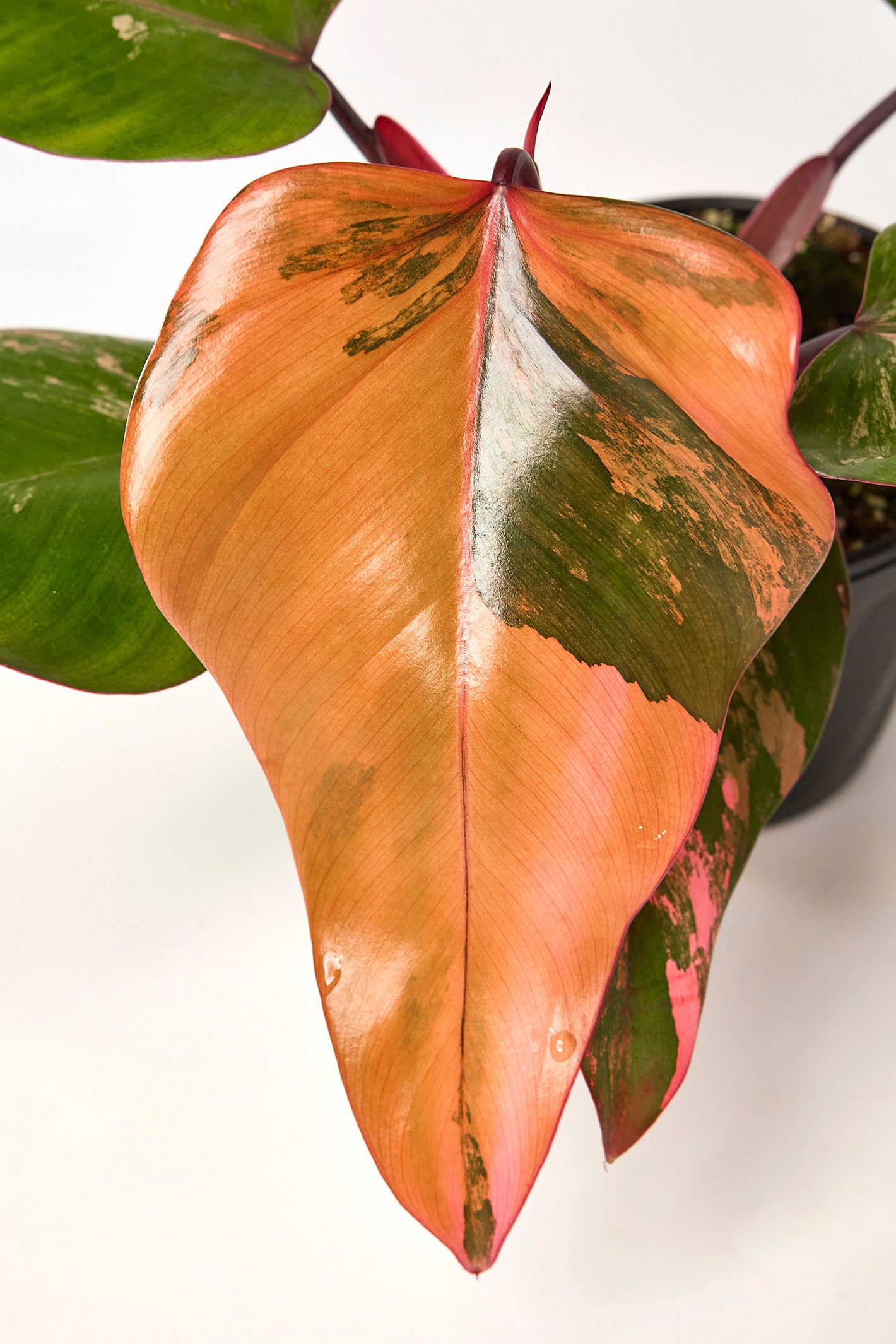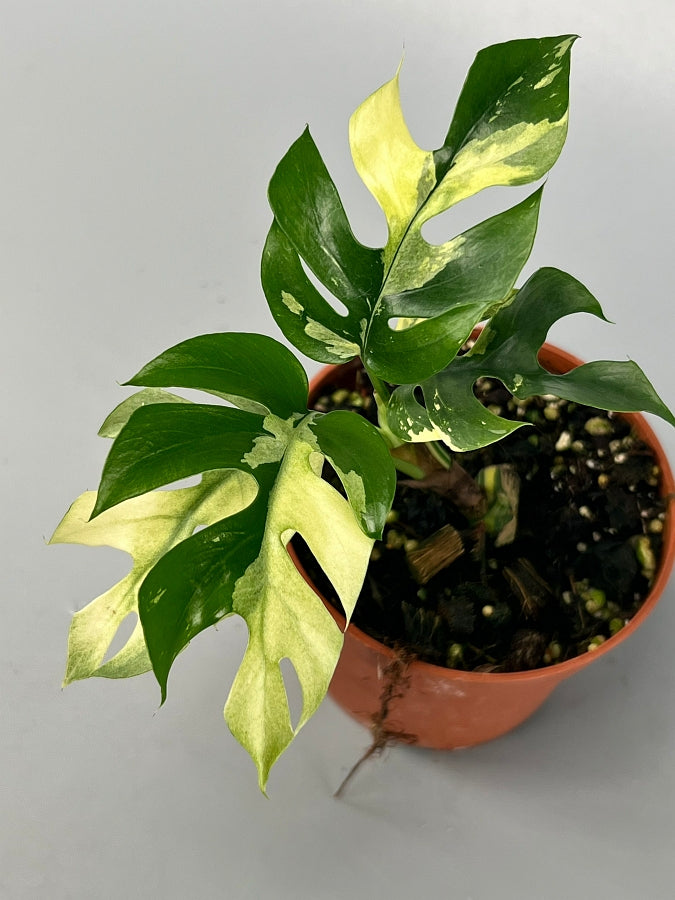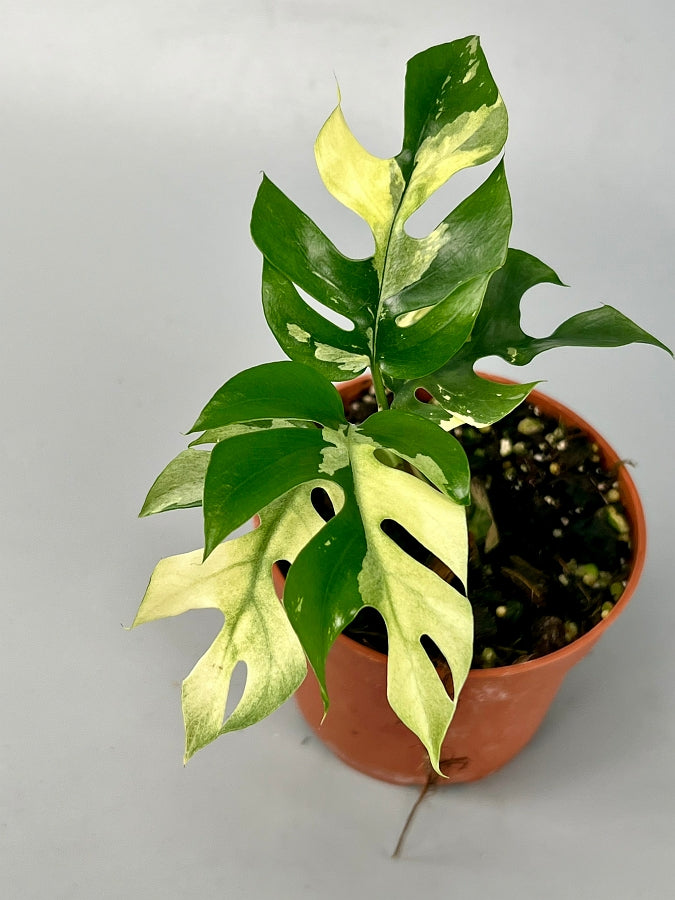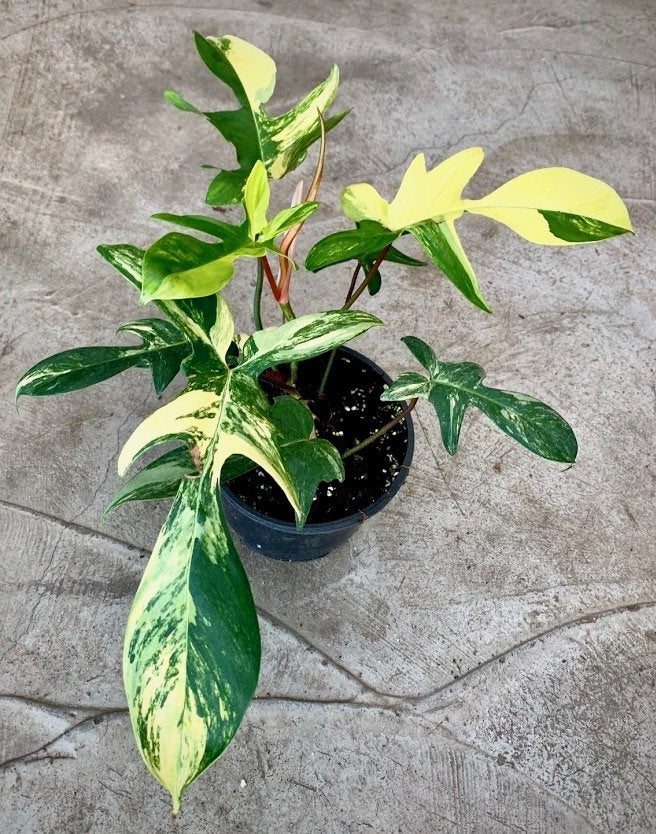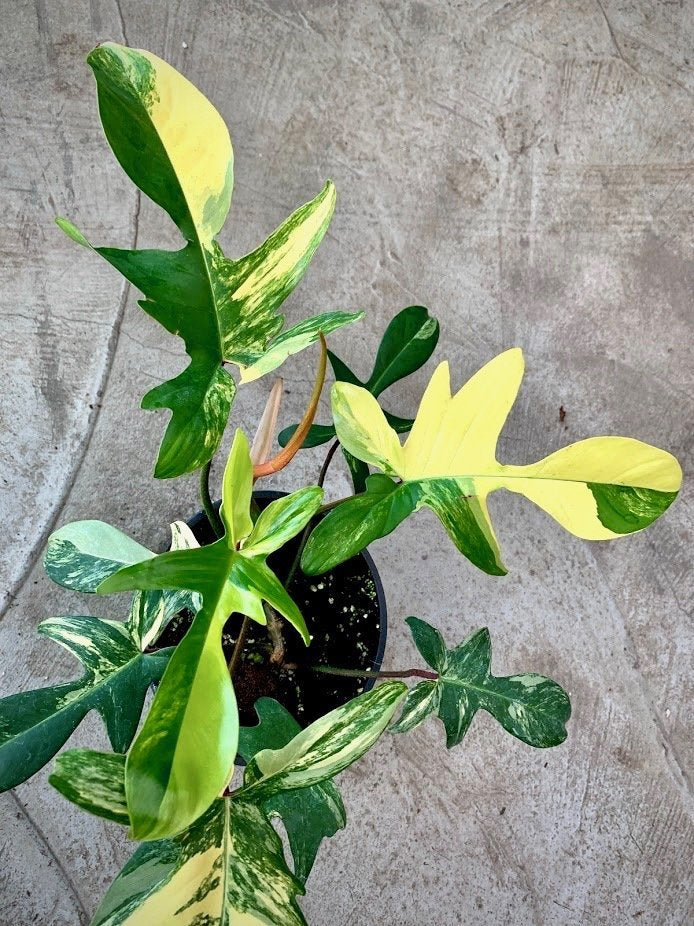A few years ago, the popularity of variegated patterned plants increased extremely. Variegated plants in particular are still very much in demand and scarce. Currently, rare gems are still popping up, which the true plant collector would love to get his hands on. Of course it is very cool to own such a special plant. But they are more difficult to care for than "normal" green plants.
Special variegated plants are, for example: Philodendron billietiae variegata, Monstera minima variegata, Monstera Thai Constellation, Aglaonema pictum tricolor, Syngonium aurea yellow variegated and Philodendron Jose Buono.
Where do I put a variegata down?
A variegata plant likes to be in a place with more indirect sunlight than the green variety. This is due to the lack of chlorophyll in the leaves. This normally gives strength to the leaves and makes photosynthesis possible. Chlorophyll is a substance that gives the plant its green color.
Despite the fact that the plant likes to be a little lighter, because it has difficulty in photosynthesis, it should be watched out for too bright indirect sunlight. This is because the spotted parts are extremely susceptible to burning.
How do I water a variegated plant?
A variegated plant is a very sensitive plant and particular attention should be paid to the way it is watered. This is because a plant with green leaves is often a lot less sensitive to burns than a plant with variegated leaves. A drop of water in combination with (indirect) sunlight can easily cause burn marks or other damage. If the plant is watered or sprayed over the leaves, it is better not to do this when the plant is in bright indirect sunlight. This is because water droplets act as magnifying glasses. The variegated parts of the leaves are so sensitive and thin that they will quickly burn or go limp.
My plant has a completely white head!
When your variegated plant has a white head it often stands in a bright spot. Unfortunately, a completely white head is not only beautiful, but especially harmful to the health of the plant. We therefore always recommend cutting back the plant so that it can start producing greener leaves again. This is because the green parts in the leaves are necessary for the survival of the plant and to absorb nutrients and convert them into energy.
Especially the Monstera deliciosa variegata often tends to get a white head when there is a lot of indirect light.
Variegata colors back to green
For plants whose leaves tend to turn back to green, we give the same advice as for a white head. Cut back to a part of the plant where there is still variegata. That way the plant will tend to make nice variegata leaves faster.
Another tip is to put the plant in a lighter spot. Then the plant will feel that it has produced enough chlorophyll and the variegated leaves will turn back into new leaves faster. Turning green again can also happen because the plant is in a too dark place.
For the plant lovers with green fingers, we also have reverted cuttings. These cuttings can color back with proper care. If you are handy with plants, this might be the solution to score a cheaper, extremely rare plant!

